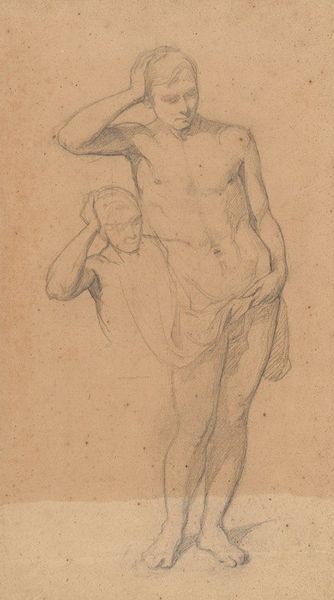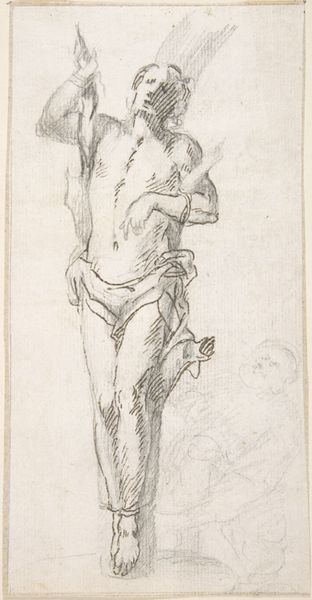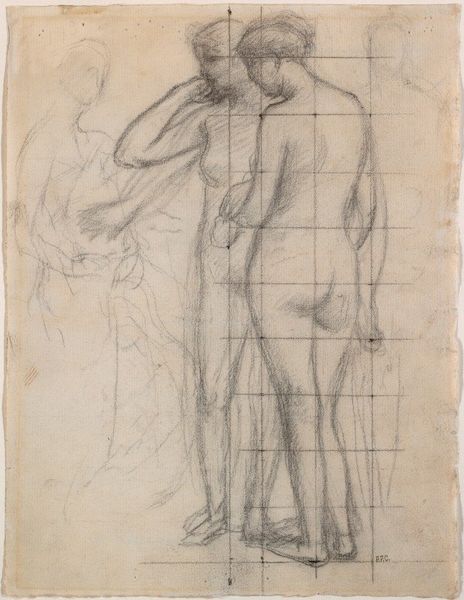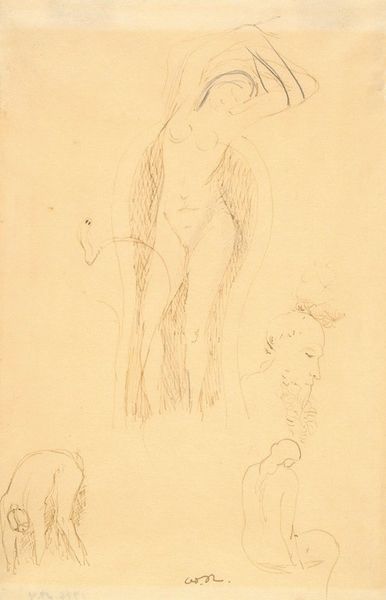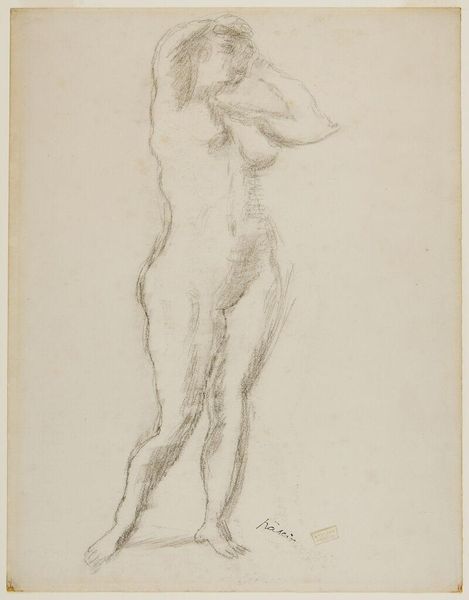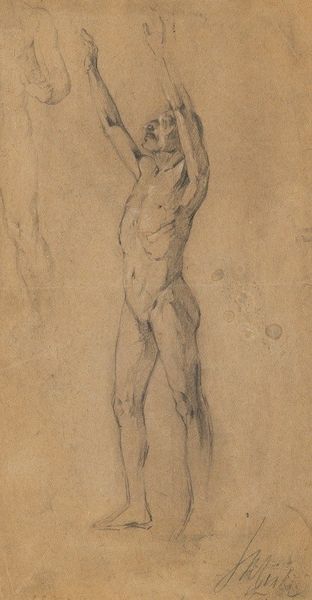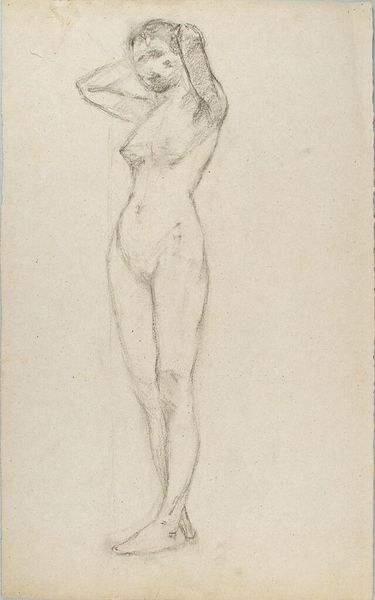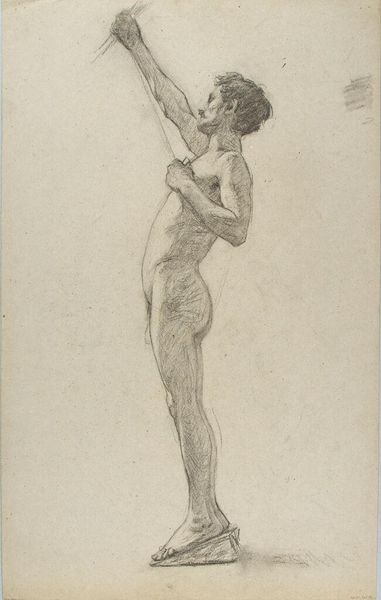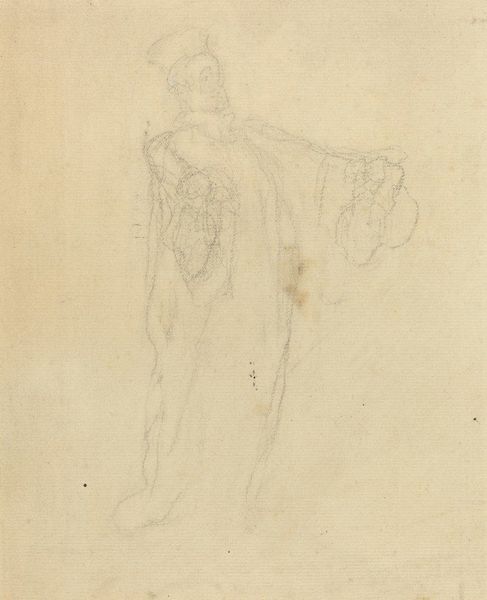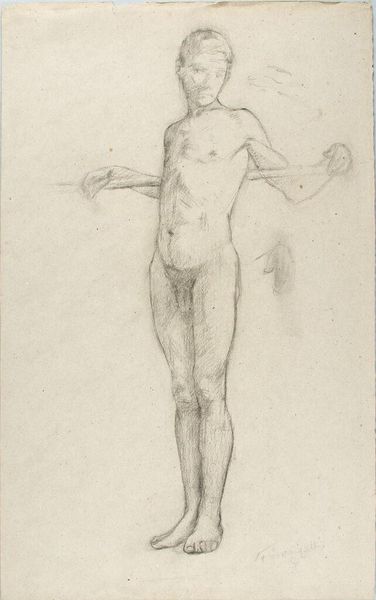
drawing, pencil
#
drawing
#
figuration
#
pencil
#
academic-art
#
nude
Copyright: Public Domain: Artvee
Curator: It's fascinating to observe Whistler's "The Fan," sketched around 1887-1888, rendered in pencil on paper. A delicate balance between academic rigor and swift, impressionistic strokes. Editor: My immediate reaction is a feeling of transience, almost ghostly. The figure is there, but fading, ephemeral, defined by shadow. Curator: Precisely. Look at how Whistler uses the pencil—the labor and process reveals a tension between defining form and allowing the underlying paper to breathe, impacting our engagement with both representation and raw material. It suggests an artist working quickly to capture something fleeting, almost as if he’s in conversation with modernity itself. Editor: Yes, the fan itself is telling—it reads like an offering, or a signal. Historically, fans signified flirtation, secrecy, or social status. Combined with the nudity, it evokes a sense of vulnerability, as if a concealed message is being laid bare. Think of it as a classical Venus rendered through a modern, impressionistic lens. Curator: I’m drawn to that relationship with materiality, challenging assumptions about what is considered high art. By focusing on these quotidian materials and subjects, we gain a deeper understanding of Whistler's perspective on society and class—the production of femininity, so to speak. Editor: The figure's pose is intentionally ambiguous too. Her downcast gaze—the averted eyes we see so often—suggest a world of internal emotion. Curator: Indeed, the interplay between material visibility and the almost-disappearing subject challenges a single interpretation, promoting multiple, conflicted feelings about feminine representation. Editor: It speaks to the power of imagery and symbols that continue to resonate centuries later, evolving with us but always holding a link to cultural memory. I hadn't thought of Whistler that way. Curator: And understanding the materials is vital to understanding its impact. It allows a closer viewing, more akin to participating with the labor involved in the craft. Thank you for pointing out how the emotional charge connects across centuries, beyond materiality!
Comments
No comments
Be the first to comment and join the conversation on the ultimate creative platform.
